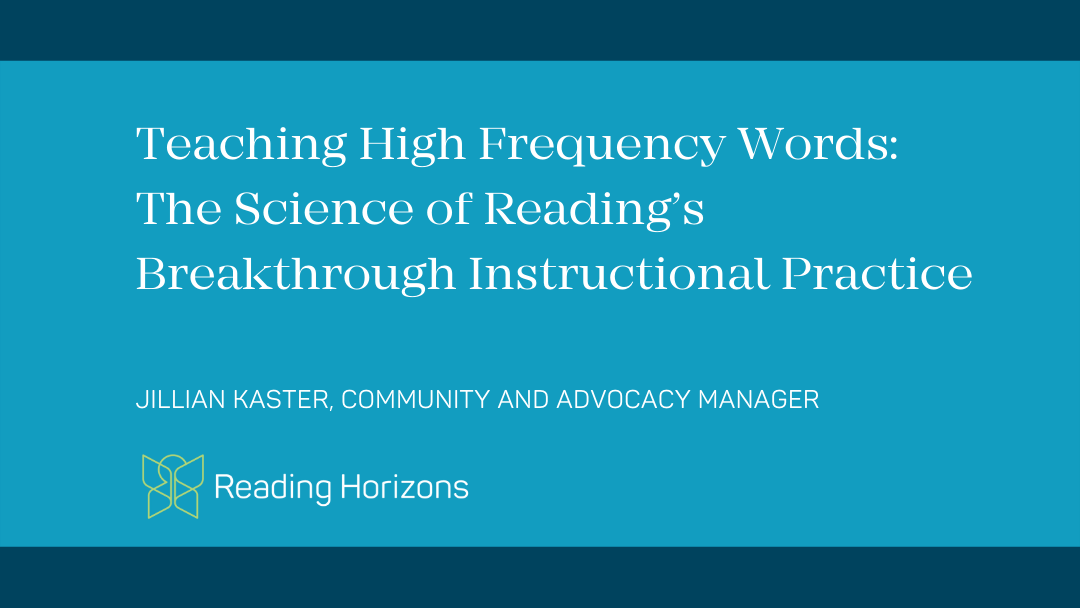There have been major breakthroughs in instructional practice that we’ve seen as the science of reading movement builds, but one that I hear educators get most passionate about is how to teach high-frequency words. Estimates suggest that twenty-five high-frequency words make up nearly one-third of the text that beginning readers see and that the 100 most frequent words make up nearly half of the words in print (Fry, Kress, & Fountoukidis, 2000).

Specifically, when using the Reading Horizons method, about 83 percent of high-frequency words become fully decodable based on phonics skills taught in the curriculum. Each phoneme-grapheme pattern in the words becomes mastered and can be applied to many other words.
On the other hand, a smaller percentage of high-frequency words are irregular. Yet, typically an irregular word only has one irregular part. The rest of the word follows regular sound-symbol correspondences.
Not to brag, but Reading Horizons has known for a long time that high-frequency words should be taught using phonics skills, not by expecting students to memorize them in whole by sight. In a recent Literacy Talks episode, Stacy Hurst, Donell Pons, and Lindsay Kemeny discuss making that transformational switch to facilitate orthographic mapping of high-frequency words, one that many of us are just now getting up to speed on. If you’re unsure where to start, read on.
Whether high-frequency words will become fully decodable or stay partially irregular, many should be taught early in a phonics scope and sequence. This will ensure students can read these commonly used words accurately even before specific decoding skills are introduced. For example, the word the is decodable if one has learned the t-h voiced digraph sound and the schwa. But given this word is the most common word in the English language, it is wise to teach it before expecting students to apply and master the phonetic concepts within the word across other similar words.
When teaching high-frequency words, the best advice is to follow the path of how reading is developed in the brain, moving from speech to print while connecting to meaning.
Four-Part Processing Model of Word Recognition
Understanding the four-part processor for word recognition helps educators understand the what and why behind orthographically mapping high-frequency words. When learning any word, engaging the language inputs and outputs of the phonological and orthographic processor, understanding the meaning, and practicing the word in context ensures the word is stored in long-term memory. Of course, this does not happen in one fell swoop, as students need lots of practice orthographically mapping words. The practical steps below cover how to teach high-frequency words.
Steps for Teaching High-Frequency Words
- Start by just saying the word while having students listen and repeat. (Phonological processor)
- Have students clap the word as you discuss the number of syllables. (Beginning phonological awareness)
- Model the word in a context sentence and have students try it. (Meaning and Context Processor)
- Say the word slowly and ask students to identify how many individual sounds they hear in the word. (Basic phonemic awareness, segmentation)
- Connect each sound to print, starting with the decodable parts and then moving into the irregular letters or letter combinations that don’t match the sound. (Encoding to facilitate orthographic mapping)
- Analyze and discuss the meaning, part of speech, and any other additional information that would be useful with students. (Connect to meaning)
- Give students multiple opportunities to practice writing and spelling the word, especially during word and sentence dictation. (Orthographic Mapping)

